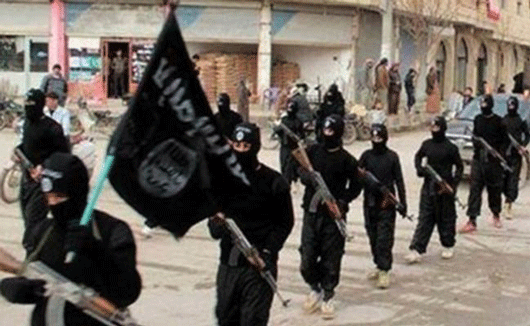
As the war in Yemen approaches the one-year mark, the so-called ISIS continues its push to divide and radicalize an already traumatized society.
Amid reports of the first prisoner exchange between Houthi revolutionaries... and Saudi Arabia, and speculation that talks could begin to end the fighting that has killed more than 6,000 people, ISIS demonstrated once again its commitment to savagery as a tool of terror. Whatever does or does not happen in the larger war in Yemen, the fight against ISIS and al-Qaeda will remain a long-term challenge.
On March 4, gunmen entered a nursing home run by the Missionaries of Charity, an organization started by Mother Theresa. The attackers, believed to be from the ISIS, shot and killed 18 people, including elderly patients and 4 nuns. The murder of nuns who had dedicated their lives to helping Yemen’s most needy is an escalation of a trend towards savagery by the group that has targeted mosques repeatedly in the last year. Pope Francis called the attack ’diabolical’ and even al-Qaeda denounced it, saying the attack was ’not our way of fighting.’
The murders are the most recent example of the difference in strategy between the ISIS in Yemen and al-Qaeda in the Arabian Peninsula (AQAP). The latter has deep roots in Yemen and largely avoids attacks on Yemeni civilians. AQAP denied involvement in the March 2015 bombing of two mosques in Sana’a that killed 142 people, while the ISIS claimed credit for it. As in Syria, Iraq, and Libya, the ISIS has no interest in building coalitions or local support. There is no carrot and stick approach-only the stick. AQAP has done relatively well in Yemen by focusing on attacking the government and, most of all, Western targets. The ISIS attacks Yemeni civilians, primarily Muslim, not to build support, but to demand obedience.
Both groups have thrived in the year-long war between the Saudi-led coalition and the Houthi revolutionaries, a war that produced nothing but misery for the Yemenis and no strategic leverage for the rival powers of Saudi Arabia and Iran. The quagmire in the air has become one on the ground as well. On March 8, the two sides held their first announced prisoner exchange since the start of the bombing campaign; the Saudis exchanged seven Yemeni prisoners for the return of a captured Saudi corporal. There are reports that this exchange could lead to broader talks aimed at ending the hostilities.
A cessation of the fighting would allow for more humanitarian aid for the over seven million people that the UN says are ’severely food insecure,’ and begin the slow process of rebuilding what was pointlessly destroyed. Yet any potential peace would be threatened not just by the persistent regional machinations, but by the expanding extremism enabled by the fighting. AQAP is more powerful now than it has ever been; drone strikes may impact specific leaders but they will not dent the group’s overall strength. The ISIS is nowhere near as strong as AQAP, but what it lacks in numbers and support it makes up for in extreme violence and a determination to gain a lasting foothold in yet another collapsing state.
Sources: The Soufan Group, Edited by Website Team